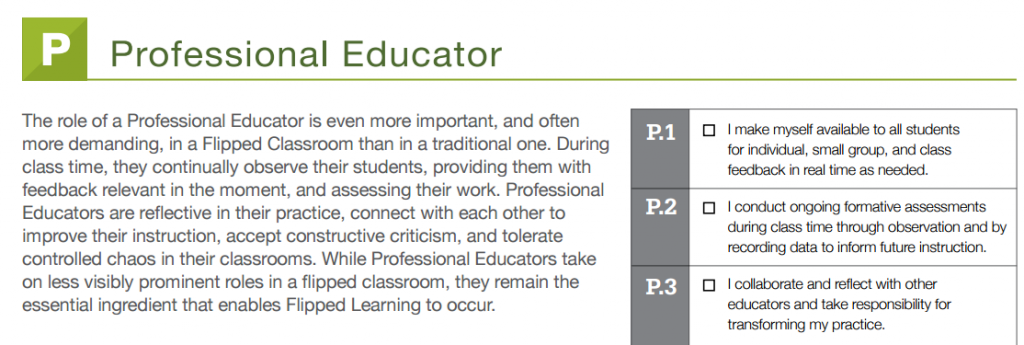Released March 12, 2014
To counter common misconceptions and bring clarity to discussions about “Flipped Learning,” the governing board and key leaders of the Flipped Learning Network (FLN) announced a formal definition of the term. They also released the Four Pillars of F-L-I-P™ and a checklist of eleven indicators that educators must incorporate into their practice. The group of experienced flipped educators also draws a distinction between Flipped Learning and a Flipped Classroom.
What is Flipped Learning?

While often defined simplistically as “school work at home and home work at school,” Flipped Learning
is an approach that allows teachers to implement a methodology, or various methodologies, in their
classrooms.
To counter some of the misconceptions about this term, the governing board and key leaders of the Flipped Learning Network (FLN), all experienced Flipped Educators, have composed a formal definition of “Flipped Learning.” Explicitly defining the term may dispel some of the myths repeatedly promulgated by teachers, the media, and researchers.
These Flipped Learning leaders also distinguish between a Flipped Classroom and Flipped Learning. These terms are not interchangeable. Flipping a class can, but does not necessarily, lead to Flipped Learning. Many teachers may already flip their classes by having students read text outside of class, watch supplemental videos, or solve additional problems, but to engage in Flipped Learning, teachers must incorporate the following four pillars into their practice.
Citation: Flipped Learning Network (FLN). (2014) The Four Pillars of F-L-I-P™ Reproducible PDF can be found at www.flippedlearning.org/definition.
![]() Available under a Creative Commons Attribution-NonCommercial-NoDerivatives 4.0 International (CC BY-NC-ND 4.0).
Available under a Creative Commons Attribution-NonCommercial-NoDerivatives 4.0 International (CC BY-NC-ND 4.0).
The Flipped Learning Network is a 501 (c) 3 with the mission of providing educators with the knowledge, skills, and resources to implement Flipped Learning successfully. The Four Pillars of F-L-I-P™ and the definition were written by the FLN’s board members: Aaron Sams, Jon Bergmann, Kristin Daniels, Brian Bennett, Helaine W. Marshall, Ph.D., and Kari M. Arfstrom, Ph.D., executive director, with additional support from experienced Flipped Educators.
The Four Pillars of F-L-I-P™





